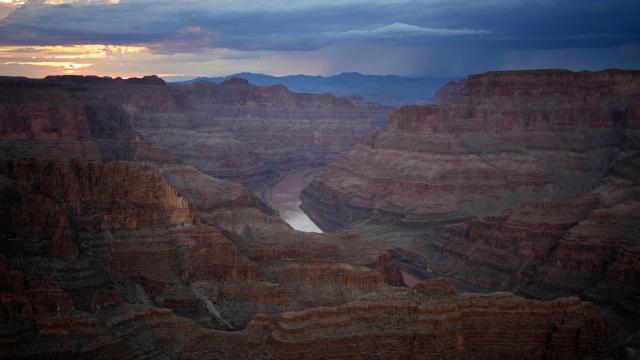The Colorado River, which provides drinking water to about 40 million people in the U.S., is in dire straits. Widespread and severe drought (worsened by climate change), coupled with ongoing high water demand, have left the river and the reservoirs along it at record lows. This week, a key deadline for decisive planning action has come and gone, with no resolution.
Federal officials issued something of an ultimatum to all seven states that rely on the waterway back in June: Figure out how to cut down on water usage by a massive amount, or we’ll do it for you.
Specifically, the Bureau of Reclamation commissioner, Camille Calimlim Touton, said that “between 2 and 4 million acre-feet of additional conservation is needed just to protect critical levels in 2023,” in a June 14 Senate hearing. (“Critical levels” refers to the ability of dams along the river to produce hydroelectric power.) That’s about one to two million Olympic swimming pools, 2,000 to 4,000 times as much water as could fit in the Houston Astrodome, and as much as 75% of what the state of Colorado uses annually.
Officials added that states would have just 60 days to figure out and commit to a plan to make those changes before the feds stepped in.
Yet its been 65 days since that vague federal threat, and no state-created watershed-wide plan has materialised. (Though the negotiations to try to concoct one have been tense, according to a report from KUNC, Northern Colorado’s public radio station.) “The last sixty-two days produced exactly nothing in terms of meaningful collective action to help forestall the looming crisis,” wrote John Entsminger, manager of the Southern Nevada Water Authority, in an August 15 letter to federal officials.
And, so far, the feds haven’t announced their own long-term plan, either.
It’s left a conspicuous void and a big, unsettling ‘?’ is brewing over the Southwest, as the region struggles to conserve its dwindling water supply. Meanwhile, the fate of the Colorado River, the West’s electricity grid, agricultural production in the U.S. and Mexico, and tens of millions of peoples’ drinking water all hang in the balance.
Instead of a comprehensive plan for big change, smaller (albeit still historic) cuts, automatically triggered by existing policy, are going into place for Nevada and Arizona. The Interior Department announced that both states would be entering “Level 2a Shortage Conditions” for the first time ever on Tuesday. Which means the states will have to save a total of 10,117.15 ha-feet and 239,574.11 ha feet, respectively. (Notably, California — far and away the biggest water user — is being spared).
But these numbers are just a small step up from the restrictions that were already in place. Arizona’s seemingly large supply reduction is only about 13% more than what it was facing prior to this week.
The Interior Department also announced the extension of existing curtailments and some administrative actions. One small sign of good news: The newly signed Inflation Reduction Act allocates an additional $US4 ($6) billion to water management in the Colorado River Basin, according to the DOI. Yet these incremental shifts aren’t sufficient, say environmental advocates.
“The 2a cuts alone are not going to be enough,” said director of the conservation organisation, Great Basin Water Network, Kyle Roerink, to KUNC.
Ted Cooke, the general manager of the Central Arizona Project that supplies water to multiple counties, told CNN that “The approach the United States has been taking has been taking is trying to facilitate voluntary offers, cajole the states to do what the states ultimately need to do, rather than getting out the stick.” At this point, states might need the stick.
